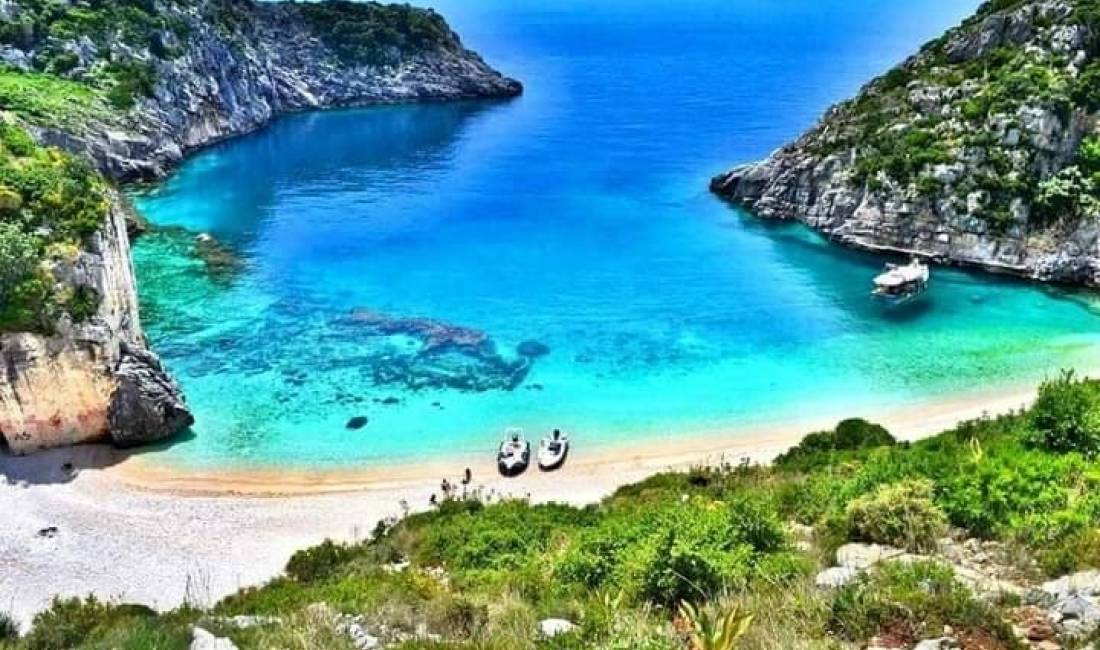The Gulf of Grama, located on the Karaburun Peninsula and also known as the Gulf of Grammata, lies at the foot of its steep western slope, near the town of Orikum. The Gulf of Grama served as a refuge for ships in distress along this dangerous coast during adverse weather conditions. Initially, this gulf was used as an area for the extraction of local stone, with large quarries, the traces of which are still visible today on both slopes.
The name Grama is clearly linked to the inscriptions carved there since antiquity. The rock inscriptions in the Gulf of Grama are numerous, with more than 1500 inscriptions. The Greek inscriptions are the oldest and date back to the last centuries before Christ, followed by some Latin inscriptions from the imperial period, before medieval Greek became dominant with inscriptions that mostly address Jesus Christ.
The ancient Greek inscriptions are dedicated to the Dioscuri, Castor and Pollux, who were pagan deities and protectors of sailors and ships. The formula specifies that the author of the inscription asks for help from the Dioscuri for different people, family members, fellow travelers, fellow slaves, etc. The presence of Latin names translated into Greek also indicates the close ties between the two shores of the Adriatic and Ionian Seas, to the extent that Latin names are found even among the inhabitants of the eastern coast. The medieval inscriptions, written in Greek, are prayers addressed to Jesus Christ, generally with the formula "Lord, help your servant". The most remarkable medieval document, presented by Henri Daumet, shows that in 1369, the Emperor of the Romans John V Paleologus came to the Gulf of Grama during a journey to Venice, as reported by contemporary witnesses.


